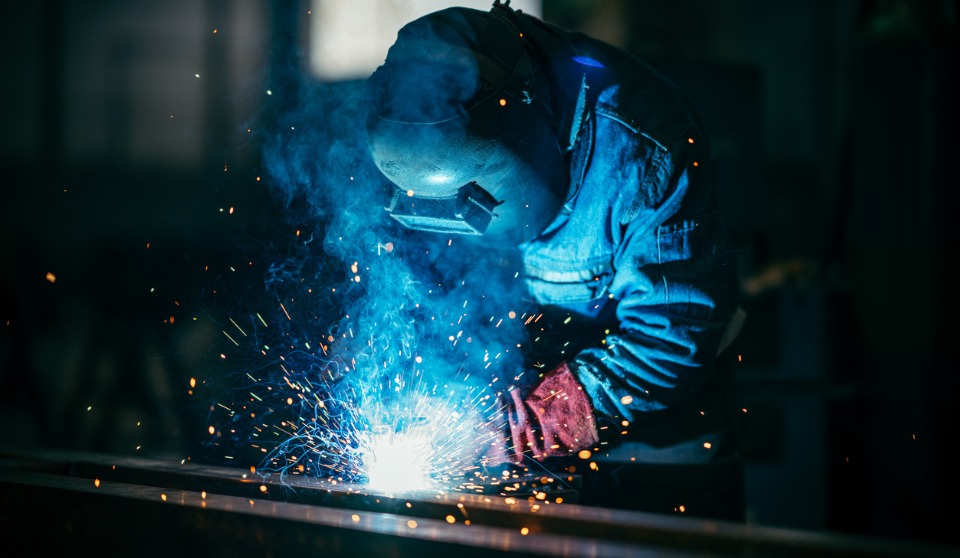Welding operations will require a strict regimen of controls


The health risks associated with exposure to the fume produced when welding mild steel just got worse. Mild steel welding fume is now considered to be a carcinogen, according to research by the International Agency for Research on Cancer (IARC). Welding fume particles are extremely small and when inhaled they can penetrate to the very deepest part of the lung where they may be deposited or absorbed by the body.
In response to this classification, some government agencies are already taking action and others are likely to follow. The United Kingdom’s Health and Safety Executive (HSE) has reclassified mild steel welding fume as a human carcinogen and released a safety alert prompting employers and workers to drastically increase controls to reduce occupational exposure and the occupational cancer risk. IARC’s new scientific evidence shows that exposure to all welding fume, including mild steel welding, can cause lung cancer. IARC’s study also suggests some evidence linking exposure to welding fume to kidney cancer.
It is well established that there is no safe limit for exposure to carcinogens and so the strategy has to be to seek zero exposure to welding fume. The outcome of ongoing research is the development of published occupational exposure limits (OEL) or in the reduction in a previously published OEL. Occupational exposure limits are the maximum permissible concentrations of a hazardous substance that most healthy adults may be repeatedly exposed to without suffering adverse health effects. OELs are published by the regulators and are thought of as an acceptable or legislated level of exposure. An OEL is the concentration of a substance that a person can be exposed to for a particular length of time, such as an eight-hour shift, to remain in compliance.
In the case of welding fume, OELs are published as the allowable concentration in milligrams of metal fume per cubic metre of air. The OEL for iron oxide welding fume in Alberta, for example, is five milligrams per cubic metre.
The best way to control exposures and prevent injuries and illnesses posed by all workplace hazards is to follow the concept of the hierarchy of controls. Eliminate exposure where possible. Use engineering controls as the next best strategy. In addition, procedural controls combined with personal protective equipment should be used. Related to welding operations, employing the hierarchy of controls currently means not simply controlling exposure by using dilution or local exhaust ventilation in combination with respiratory protection. This current program of controls used in welding operations will no longer be sufficient.
Now that welding fume has been identified as a carcinogen, the strict use of these controls will be required along with improved housekeeping and work site and worker decontamination. The dust associated with all welding must now be considered a carcinogen and will need to be diligently controlled. Welding fume and the residual dust created cannot be allowed to be entrained into the ventilation systems serving non-welding shop areas or office areas. Welders will need to properly decontaminate at the end of each shift so as to not bring this carcinogenic dust into these areas as well as personal vehicles and even their homes.
Read next: How to pick the best fume hoods for hazardous worksites
The traditional controls will go from being “nice to have” in most metal fabrication shops to “must have” anywhere any welding operations are being carried out. The focus will now include ensuring all welders and others working in the welding area are suitably instructed and trained to understand the risks and know how to use the expanded control program. Regardless of duration of the welding processes, we can no longer accept any welding being undertaken without any suitable exposure control measures in place, as there is no known level of safe exposure to this contaminant.
What this means for the future is that welding operations will no longer be allowed to occur in open shops without a strict regimen of controls. All employers will need to immediately review current welding control measures in place to ascertain that they meet these raised control standards. This may also mean that risk assessments and risk registers may need to be updated to ensure that they reflect the new requirements. Ventilation systems will need to be assessed to confirm effectiveness. The selection, use and care of PPE will need to be reviewed to ensure it meets this higher standard. Housekeeping methods will need to be improved and decontamination will need to be provided. Air and surface contamination monitoring will be required to confirm the adequacy of controls.
Carcinogen exposure is a serious issue. The safety community needs to get the word out to workers, supervisors, managers and senior leaders. We need to get out and assess our welding shops, review safe work procedures for welding and fortify the controls.
This article originally appeared in the October/November 2019 issue of COS.





